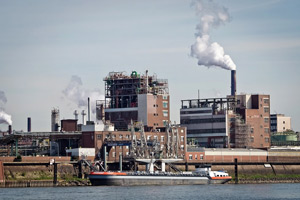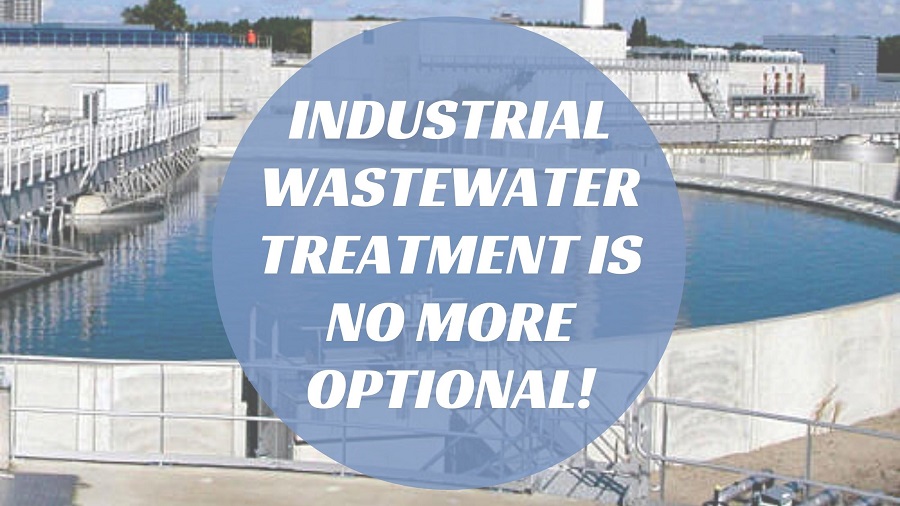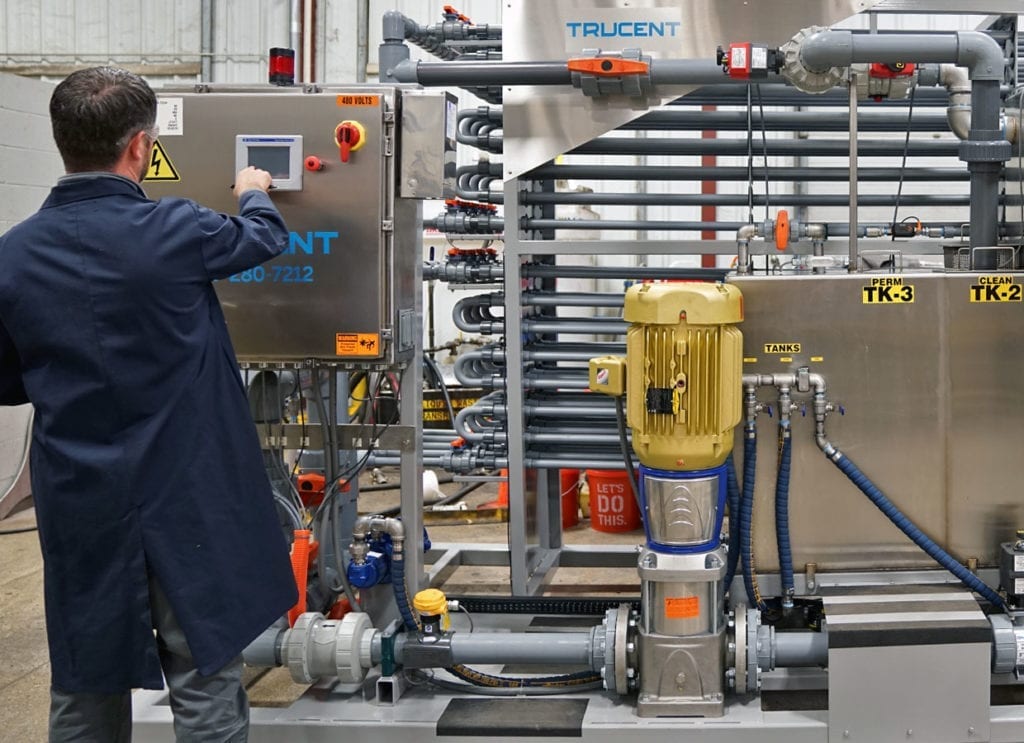Innovations and Advancements in Industrial Waste Water Treatment Technologies
The landscape of industrial wastewater treatment is going through a transformative shift, driven by technologies that boost both efficiency and sustainability. Emerging modern technologies, such as membrane layer bioreactors and microbial fuel cells, are redefining pollutant elimination procedures while adding to power generation. Furthermore, source healing methods are acquiring grip, aligning with circular economic situation principles. As regulative standards progress, the integration of AI and machine discovering into wastewater administration systems promises to guarantee and streamline procedures compliance. Nonetheless, the full ramifications of these advancements elevate essential concerns regarding their scalability and lasting influence on sector methods.
Introduction of Waste Water Therapy Technologies
Wastewater therapy modern technologies include a variety of techniques made to remove impurities from commercial effluents before their launch right into the atmosphere. These modern technologies are essential for keeping ecological balance and making certain conformity with ecological policies. The main classifications of wastewater therapy include physical, chemical, and biological approaches, each offering distinctive objectives based on the nature of the impurities present.

Biological treatment methods utilize microbes to degrade organic matter, making them particularly efficient for organic-rich effluents. Techniques like triggered sludge and biofilm reactors harness the natural degradation abilities of bacteria, resulting in substantial decreases in biochemical oxygen demand (BOD)
Advanced Purification Methods
Advanced filtration methods represent an essential evolution in the world of industrial wastewater therapy, boosting the efficiency of impurity elimination procedures. Industrial Waste Water Treatment. These approaches incorporate a variety of technologies, consisting of microfiltration, ultrafiltration, nanofiltration, and turn around osmosis, which supply sequential obstacles for different fragment dimensions and chemical frameworks
Microfiltration and ultrafiltration make use of membrane layer systems to remove suspended solids, germs, and larger organic molecules, boosting the high quality of effluent before more treatment. Nanofiltration connects the gap in between ultrafiltration and turn around osmosis, effectively getting rid of organic compounds and divalent ions, hence reducing the lots on downstream processes.
Reverse osmosis supplies the greatest degree of purification by allowing just water and small molecules to pass through its semi-permeable membrane layers, making it suitable for recovering high-quality water from industrial effluents. Recent innovations in membrane technology, consisting of the advancement of even more sturdy and fouling-resistant products, have actually significantly improved operational performance and reduced costs.
Including these innovative filtration techniques not just enhances the general therapy process but additionally adds to sustainability efforts by allowing water reuse and resource healing in commercial setups. (Industrial Waste Water Treatment)
Biological Treatment Developments

Additionally, the development of crafted biological systems, such as membrane bioreactors (MBRs), incorporates organic treatment with sophisticated membrane filtration. This integration permits greater effluent top quality and decreased footprint, making it suitable for space-constrained industrial facilities. Advancements in genetically engineered microbes have also arised, enhancing the biodegradation of certain impurities, such as drugs and hefty steels, that are typically challenging to remove.
Furthermore, the application of bioaugmentation approaches, where useful microorganisms are introduced to boost the existing biological therapy processes, has shown promising cause improving therapy efficiency. These advancements collectively symbolize a pattern towards even more efficient and sustainable organic treatment approaches that can adapt to the evolving complexities of commercial wastewater streams. As markets remain to focus on ecological conformity, these organic developments will play an important function in wastewater monitoring.

Resource Healing Methods
In commercial settings, the integration of resource healing approaches has actually come to be progressively important for enhancing sustainability and reducing waste. These approaches concentrate on extracting beneficial materials and power from wastewater streams, therefore transforming prospective contaminants into multiple-use resources.
One popular approach is nutrient healing, where nitrogen and phosphorus, frequently existing in excess in wastewater, are caught and converted into fertilizers. This not only decreases environmental effects however also offers a circular economic situation solution for farming applications. Furthermore, modern technologies such as anaerobic digestion enable the conversion of organic waste right into biogas, a renewable resource resource that can balance out nonrenewable fuel source usage in industrial operations.
Moreover, progressed purification and membrane innovations assist in the recovery of commercial spin-offs such as metals and salts. These recouped materials can be rehabilitated right into production procedures, decreasing the demand for virgin resources.
Future Patterns in Waste Water Administration
As markets increasingly focus on sustainability, the future of wastewater management is set to go go through substantial changes. Technical advancements, such as synthetic knowledge and artificial intelligence, will enable extra efficient surveillance and management of wastewater systems. These technologies can anticipate upkeep needs, optimize treatment procedures, and boost decision-making, eventually decreasing operational costs and environmental effect.
Furthermore, the assimilation of round economic i thought about this situation concepts will play a critical duty in wastewater management. Industries are expected to change in the direction of systems that not only deal with wastewater but additionally recuperate important sources, such as nutrients, water, and energy. This shift will minimize waste and promote the reuse of materials, straightening with international sustainability objectives.
Emerging treatment methods, such as membrane bioreactors and progressed oxidation processes, will certainly even more boost the effectiveness of wastewater treatment, enabling higher top quality effluents appropriate for reuse. Additionally, governing structures are likely to advance, highlighting more stringent standards for wastewater discharge and motivating industries to take on ingenious therapy solutions.
Final Thought
In verdict, the evolution of industrial wastewater therapy modern technologies demonstrates a substantial shift in the direction of enhanced performance and sustainability (Industrial Waste Water Treatment). Advancements in advanced filtration strategies, organic treatments, and source recovery techniques highlight the advice industry's commitment to environmental stewardship.
The landscape of commercial wastewater treatment is undertaking a transformative change, driven by innovations that improve both efficiency and sustainability.Wastewater therapy technologies include an array of methods made to eliminate pollutants from commercial effluents before their release right into the environment.Using the power of organic procedures has actually led to substantial innovations in the therapy of industrial wastewater.Additionally, the implementation of bioaugmentation methods, where helpful microbes are introduced to boost the existing organic therapy procedures, has shown promising outcomes in enhancing therapy efficiency. These developments collectively indicate a trend in the direction of even more effective and sustainable organic therapy methodologies that can adjust to the advancing complexities of commercial wastewater streams.